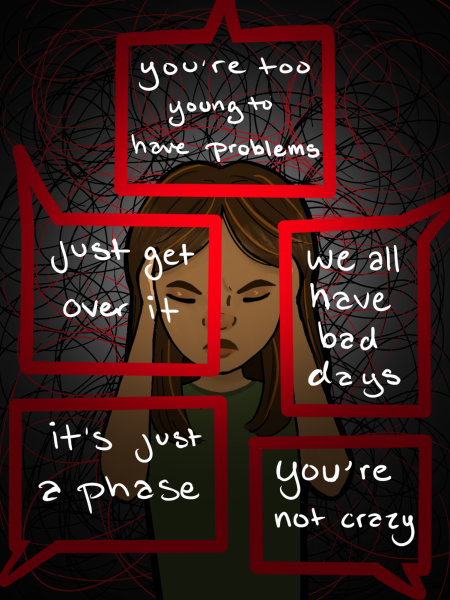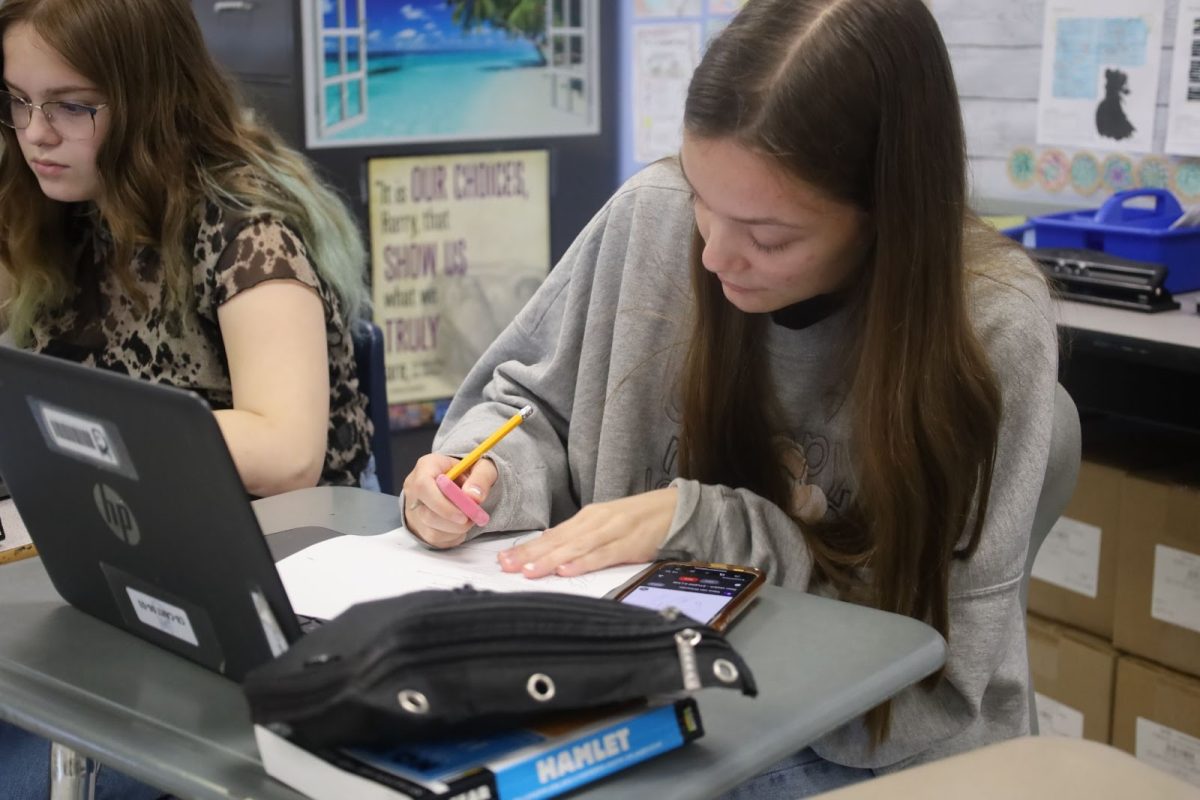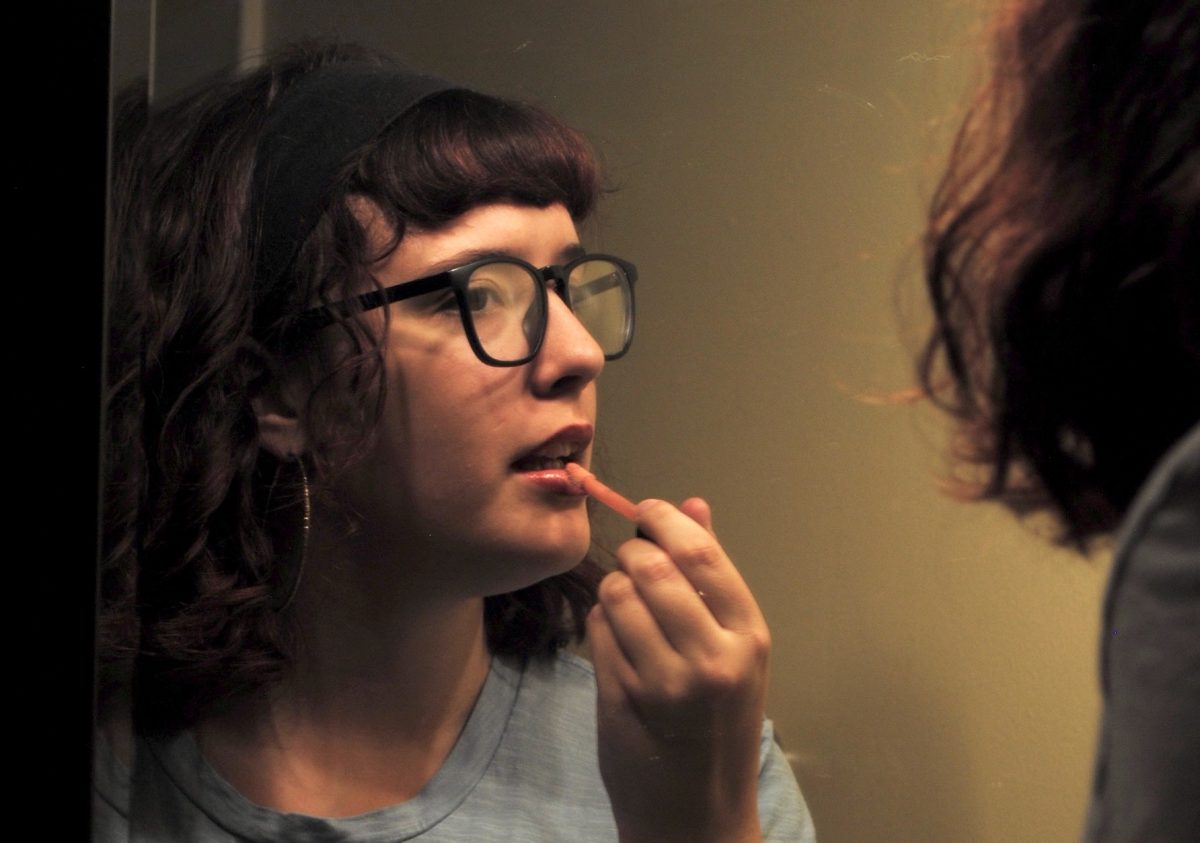
Carrying around a heavy backpack, folders full of math worksheets, three books to read for AP Literature, then after school, a seven-hour work shift and football practice, plus your significant other is refusing to text you back; these are just some of the stressors high school students face on a daily basis. The impact of school life, work and other demands take their toll, and a prevalent number of students are using therapy services outside of school to help.
Therapy is easily accessible for anyone willing to ask. A diagnosis or personal recommendation is not required to find a therapist–all that students need is to take initiative. Mental health therapist Kristy Conley, a special education teacher at Carillon Elementary School, has patients in all seasons of life, ranging from elementary to high school to adulthood. The National Alliance on Mental Illness identified that 50% of lifetime mental health illnesses begin as early as age 14, demonstrating the need to identify these problems early on. She noted that high school students often pursue therapy to grow and improve themselves, a quality she admires in her adolescent patients.
“I think students want more self-awareness about their own mental health. A lot of students are now questioning the ‘why’ of feeling certain ways. Anxiety tends to also be a big reason for high schoolers, as well, since there is a lot of pressure in high school from various things,” Conley said. “If anything, those who seek therapy are the strongest and want better for themselves.”
Students seek therapy for a variety of reasons. Some desire to face a past trauma, while others long for someone who will genuinely listen to what they have to say. By speaking to a professional, they are able to unpack their daily lives and dive deeper into what they are feeling.
“Sometimes not everyone always listens to what I have to say, and this way I have someone that does listen and is able to provide great feedback so I can become a better person in my life,” senior Sydney Schmidt said.
In-school vs outside services
In recent years, high schools have increased efforts to incorporate various mental health resources on their campuses, including mental health lessons and a mental health counselor. However, there are restrictions on these resources that prevent them from being best-suited for a student’s schedule, the intensity of their mental needs and the severity of a student’s condition.
Mental health counselor James Bartlett meets with students on an appointment-based schedule, being able to talk with them for only a set amount of time. Outside therapy has more structure that Bartlett cannot provide operating within a school. He cannot guarantee a student will be seen, considering the possibility that he will be out of office or pulled out for a risk assessment on another student. With outside counseling, students are able to choose the dates and times of their therapy sessions, giving them more control over their schedule.
“I have [therapy] after school some days, so I do have to modify it around the different clubs I’m involved in [and] move therapy appointments around,” Schmidt said.
Overcoming the stigma
After finding a therapist, an important factor is becoming acquainted and being open to the process. Senior Daniela Acuna deals with high stress, learning from her therapy sessions that the actions of other people are beyond her control. She believes that a comfortable space is integral to breeding an honest and successful therapy experience.
“I feel like for some people they have that one bad therapist or that one bad therapy session, and then all of a sudden, they bash on it, but you got to give it a try again,” Acuna said. “Some people just honestly think that therapy doesn’t help them, which I feel like, if you’re not telling the whole truth, or being yourself, then yeah, it’s not going to help.”
Facing the negative stigma of therapy is not easy; other students are reluctant due to social pressures and stereotypes associated with having a therapist. Fueled by a fear of admitting they need support, students avoid seeking consolation from trusted friends, adults and counselors. A study conducted by the National Institute of Health found that only 19.7% of adolescents were treated for mental health concerns, noting the tendency of patients to internalize their problems.
“I think so many students are afraid to take that first step because of how they’re going to feel, what people are going to think about them, [what] their peers are going to think about them,” Bartlett said. “The knee-jerk reaction for a lot of students is just to say no when therapy is brought up, just ‘I don’t need it.”
Facing external pressures
Social media and television programs contribute to this lack of mental health awareness, including the negative assumptions people have about reaching out for support. Seeking out therapy is portrayed as a cry for help, signaling the presence of a mental health illness.
“I think movies and shows do a disservice, because they portray, if you’re going to a therapist, there’s something wrong with you,” Bartlett said. “You’re crazy…[and] you hear voices, everything like that. [In reality,] 99.9% of counseling and therapy is just talking to somebody.”
Generational gaps and religious/cultural beliefs are other contributors to students’ hesitance to reach out for help. Therapy is stereotypically viewed as a medical diagnosis, instead of an opportunity to push students towards a healthier lifestyle.
“People from previous generations have a hard time understanding why therapy is important due many misconceptions and lack of understanding,” senior Angelina Yip said. “Especially with coming from various cultural beliefs and values.”
Yip’s father was hesitant to allow her to get into therapy for strict cultural reasons, believing she didn’t need a therapist. However, after she was able to get the help she wanted, it became an eye-opening experience for everyone in her family, as they saw her change her mindset, regulate her emotions more effectively and strengthen her relationships with other people.
Therapy is often stereotyped as lying down on a couch and talking about problems to a person with a clipboard, but more accurately, therapists foster discussion and allow for the patient to lay out what they have been going through to more deeply analyze it.
“I feel like people know their lives the most and having time to say things out in the open allows the brain time to conceptualize, compartmentalize and essentially be able to process their lives as a whole,” Conley said.
Unique approaches to therapy
Each therapist works with their patients through different approaches, and it looks a lot different from the stereotypical therapist-patient relationship people might expect. Activities are procured for the varying personalities of each patient and the concerns they discuss with their therapist. For instance, Yip was tasked with calling a pizza place and asking for an item not on the menu to help with her anxiety and sense of perfectionism.
Schmidt’s therapist gives her “homework” to complete outside of sessions, serving as extensions to the discussions they had. These activities enable Schmidt to think further about what’s bothering her and how she can take the necessary steps to heal.
“Sometimes she’ll give me something to write about or draw about, and then we’ll talk about it at the next session. Sometimes, things are hidden within the poems that I write or my drawings that I didn’t even realize,” Schmidt said.
Each therapist has different specializations, dealing with a range of mental health disorders. Conley specializes in dealing with anxiety, panic, and stress, but has separate, individual counseling for more severe illnesses. Incorporating their own methodology, therapists are able to connect and better understand the inner workings of patients’ minds.
For some, therapy is more than a practice, but an essential part of their lives, learning more about themselves than they even knew possible.
“I would recommend therapy to someone else because sometimes as humans we need people to talk to about our struggles…[that is] how we can grow,” Yip said. “It helps us to understand ourselves, which then allows us to improve our relationships and build healthier habits.”









